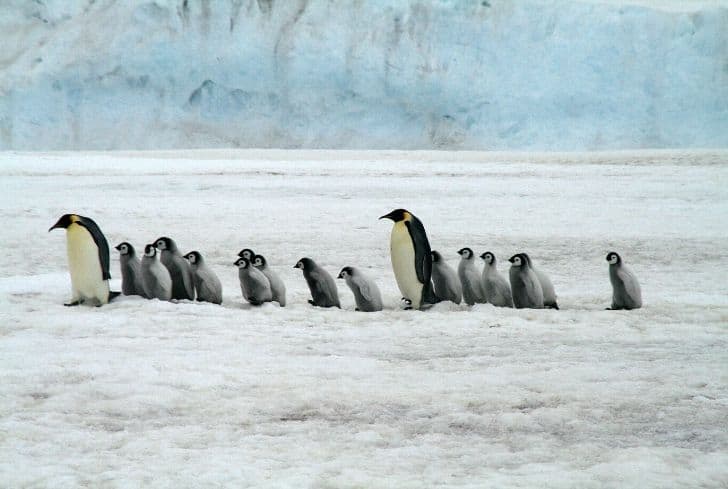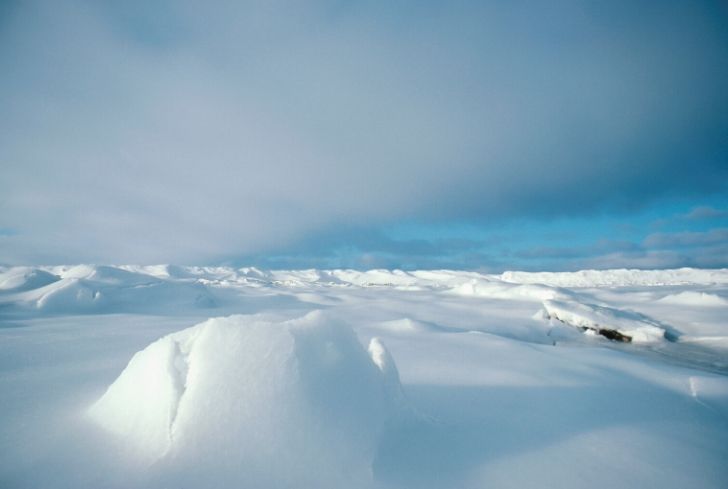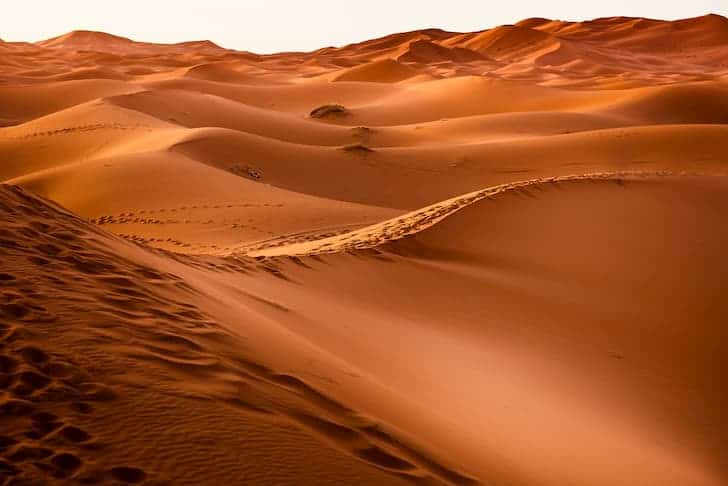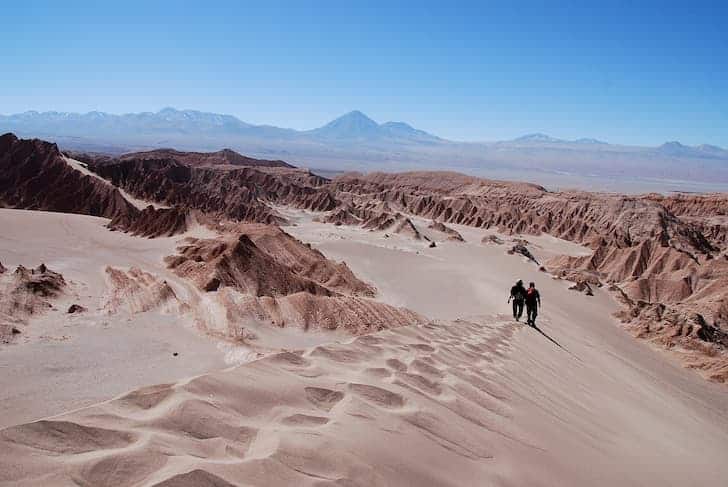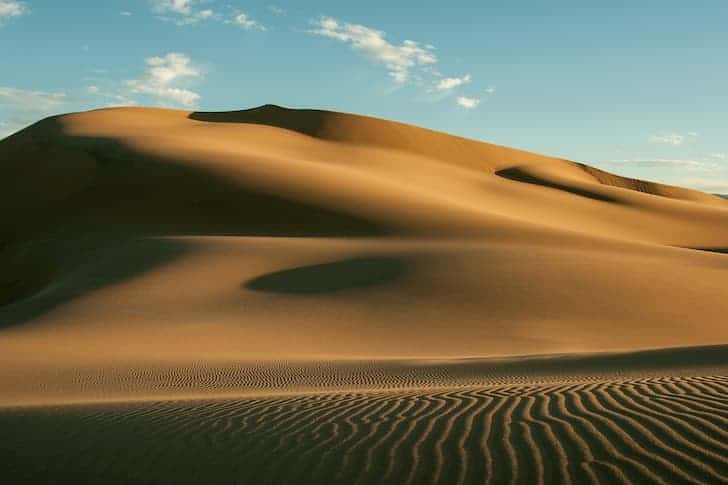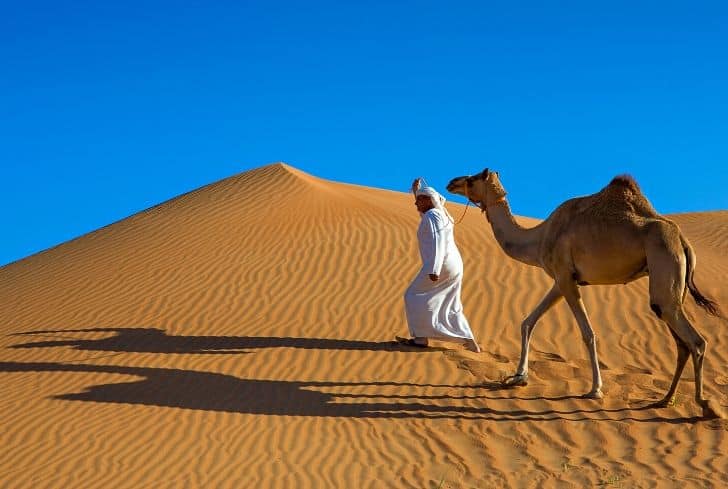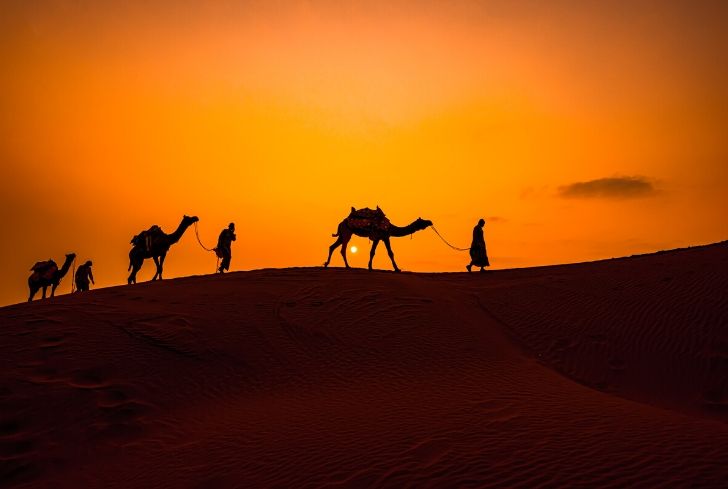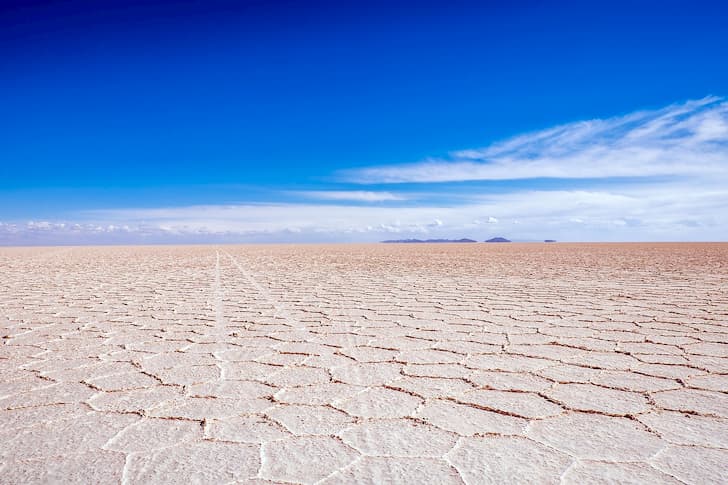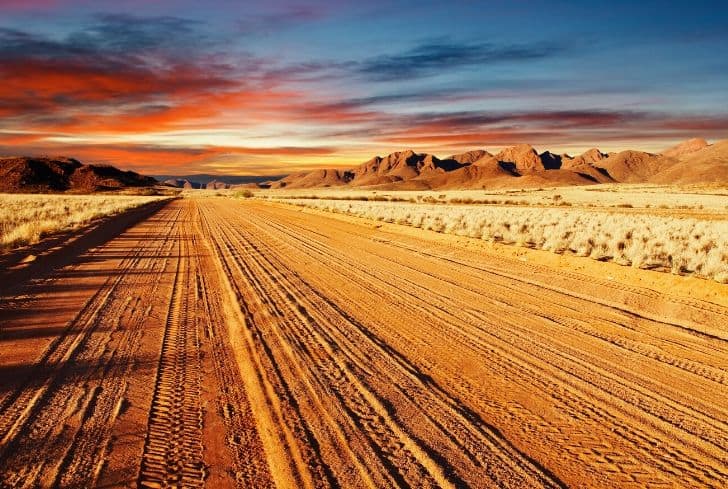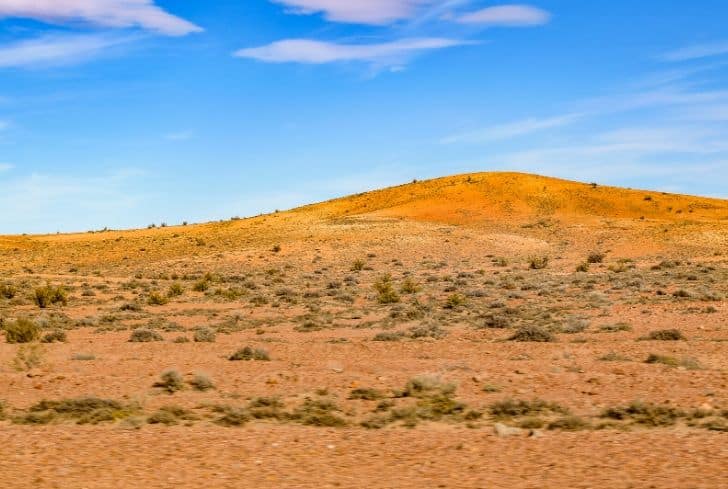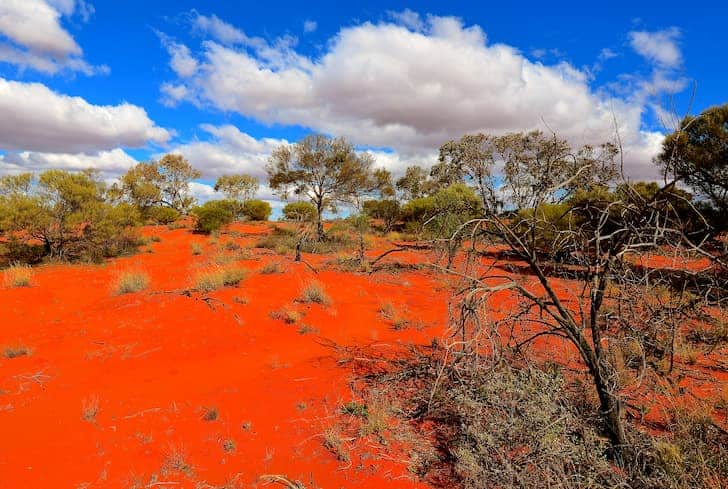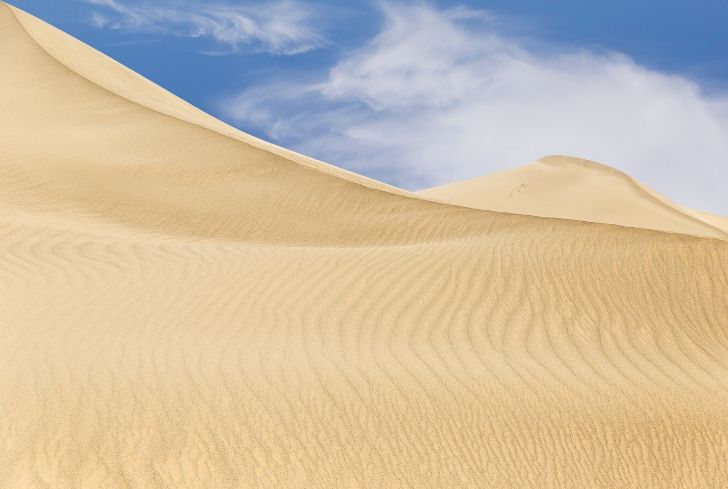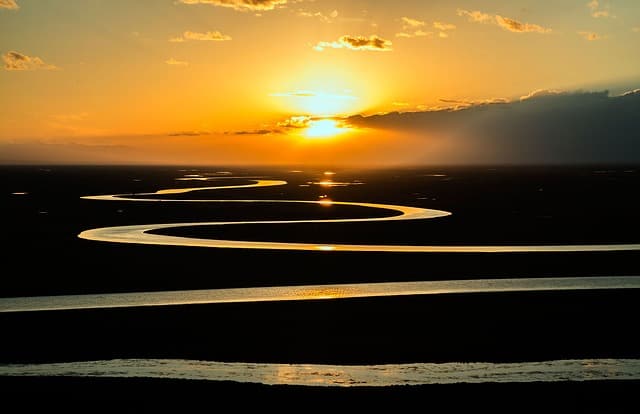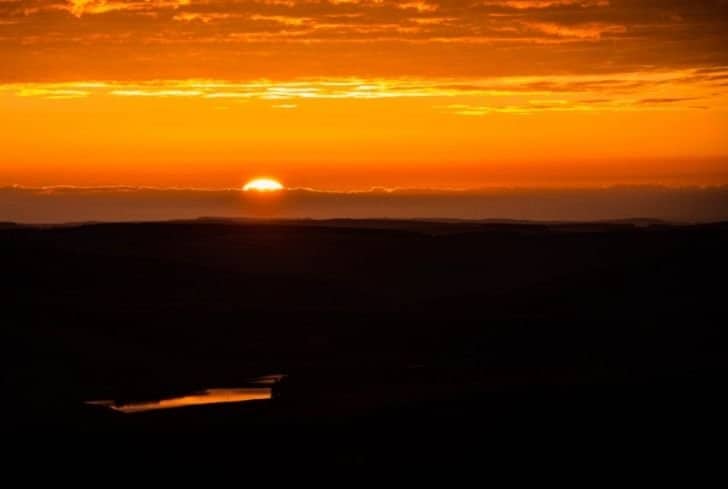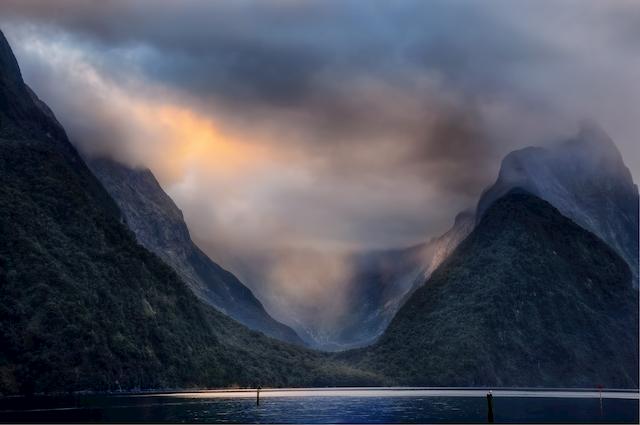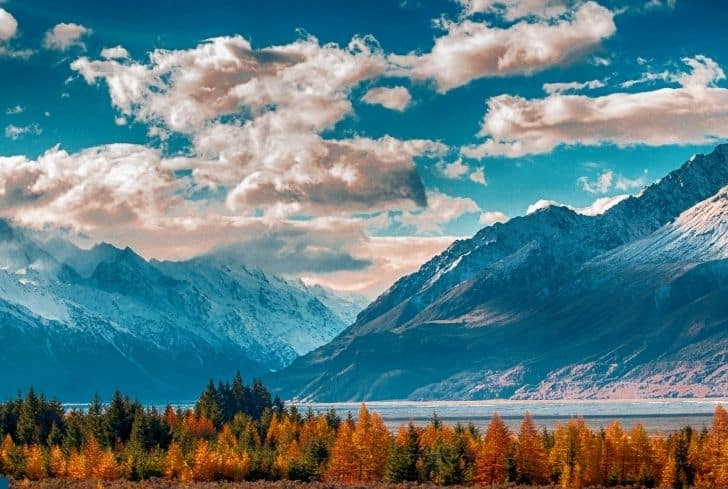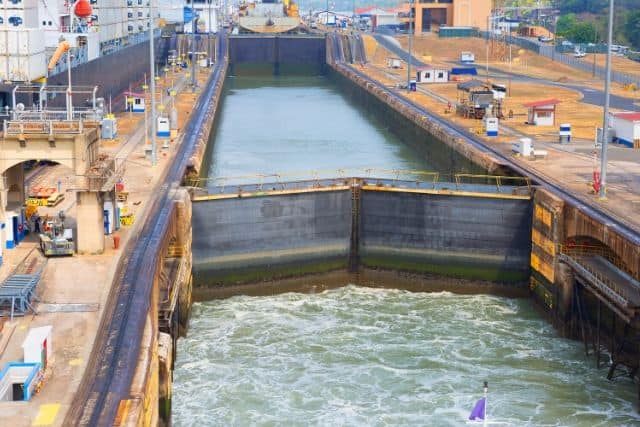The World’s 13 Most Famous Deserts You Probably Didn’t Know
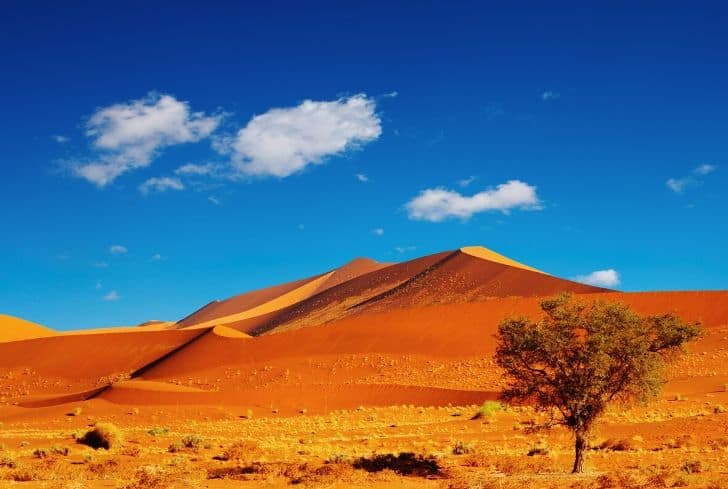
The rippling sands and stony plains of the deserts cover approximately one-fifth of the Earth’s land area. Some deserts may seem lifeless, some are biologically rich habitats, some covered in ice, and some others the hottest on Earth. Below are 13 of the most famous (and loveliest) deserts in the world.
1. Antarctica Desert
Location: South Pole
Area: 14,244,935 km²
Annual Precipitation: about 2 inches
Temperature: −10°C (Antarctic coast) to −60°C (highest parts)
We’d typically think of Antarctica as the ‘wet’ area filled with lots of ice and penguins but in reality, it is a desert. Not just any desert – the largest on Earth! The 5.5 million square miles of icy area is so cold and dry that annual precipitation – as snow, fog, or rain – is less than 2 inches.
Except for the researchers stationed, the white continent has no permanent residents. As for flora and fauna, you’ll see some shrubs, moss, algae, whales, seals, and, of course, penguins.
2. Arctic Desert
Location: North Pole
Area: 13,985,936 km²
Annual Precipitation: between 6 to 10 inches
Temperature: 10°C (summer); as low as -40°C (winter)
And at the opposite end of Antarctic is the Arctic Desert, the second largest desert in the world. It is the northernmost part of the world and extends over parts of Alaska, Greenland, Iceland, Norway, Sweden, Finland Russia, and Canada. This polar desert is a mixture of cold and dry mountains, wide plains, and dome glaciers. It is particularly vulnerable to sea ice shrinkage.
The desert is home to Eskimos as well as some 700 plant species and 120 animal species including arctic fox, polar bear, and walrus.
3. Namib Desert
Location: Overlays coastal Namibia, extending into Angola and South Africa
Area: 81,000 km²
Annual Precipitation: 0.5 – 2 inches
Temperature: up to 45°C during the day and freezing overnight
‘Namib’ is the Nama word for “an area where there is nothing”, and this Wanderlust favorite is apparently the oldest desert (55 – 80 million years old) in the world.
As well as being known for ‘Namib Sand Sea’ – the world’s only coastal desert with fog-enclosed dunes and ‘Fairy Circles’ – the mysterious grass-ringed patches, the Namib is the only desert in the world to have elephants. While the landscape is the driest and most inhospitable, you’d hardly think plants could survive out here but Welwitschia mirabilis and a diverse variety of succulents call the Namib home.
4. Sahara Desert
Location: Spread across Morocco, Mauritania, Mali, Algeria, Libya, Niger, Tunisia, Chad, Egypt, and Sudan
Area: 9.2 million km²
Annual Precipitation: less than 1 inch
Temperature: Up to 50°C during high summer; – 6°C at night
Carpeting a large part of Northern Africa, the Sahara is as large as the USA or China. The desert takes its name from the Arabian word ṣaḥrā, meaning ‘desert’ and is known as the largest hot desert in the world. Many people think it’s also the largest but in fact, it comes in third, after Antarctica and the Arctic.
The Sahara is actually mostly rocky hamada and gravel – not sand. There are 20+ saltwater lakes in the Sahara, except for the Lake Chad, the only freshwater lake. It may be the harshest environments on Earth, but the Sahara is home to nomadic communities, over a thousand species of plants and animals.
5. Atacama Desert
Location: West of the Andes along the Pacific coast in Peru and Chile
Area: 105,000 km²
Annual Precipitation: 0.6 inches
Temperature: 22 – 27°C; can drop to minus degrees at night
It’s easy to see why the Atacama in South America is called ‘the driest non-polar desert in the world’. Geographically, it is situated between the Andes Mountains and the Chilean Coast Range, which create a blockage of moisture from either the Pacific or the Atlantic Oceans, making it a sterile ground. Nevertheless, the desert is kinder towards some plants especially to the south if the Tropic of Capricon thanks to ‘camanchacas (the costal mists)’.
Another interesting fact: Due to Mars-like soils, scientists consider the Atacama ‘Mars On Earth’.
6. The Gobi Desert
Location: Crosses Northern China and southern Mongolia
Area: 1.3 million km²
Annual Precipitation: 7 inches
Temperature: −43 to 38 °C
Besides being Asia’s largest desert and the fifth-largest in the world, this cold desert is home to many of the cities on the ancient Silk Road. Contrary to what one might think, ‘The Gobi’ is not a Mongolian name! It actually takes its name from the Chinese word ‘Gebì’ which means ‘desert’. Other alternative Chinese names are sha-mo (sand desert) and han-hal (dry sea).
Though the Gobi sees one of the harshest environments where the temperatures range from −43 to 38 °C, it is surprisingly biodiverse. It is also a paradise of paleontologists – the first fossilized dinosaur eggs were discovered here.
7. Arabian Desert
Location: Middle East
Area: 2,330,989km²
Annual Precipitation: less than 4 inches
Temperature: record highs exceed 55 °C; as low as -12 °C in winter.
Spanning across the Arabian Peninsula, the subtropical desert is actually made of three deserts – the Rub’al-Khali Desert, the Ad-Dhana Desert, and the An-Nafud Desert. The Rubʿ al Khali, the centerpiece of the Arabian Desert, is also one of the largest continuous bodies of sand in the world. It is said that the desert receives about 3,400 hours of sunshine per annum, making it one of the sunniest places on earth.
Though it gets very little rain and is extremely hot, many species of plants and animals have over time made the Arabian desert their home. Historical evidence says that humans have inhabited the desert for more than 2.5 million years.
8. Thar Desert
Location: Spans parts of western India and eastern Pakistan
Area: 200,000 km²
Annual Precipitation: 4 inches or less
Temperature: goes up to 50 °C in Summer and drops to 5-10 °C in winter
Although it slides into the 18th position in the list of largest subtropical deserts, the Thar desert is popular for its cultural legacy and biodiversity. Also known as the Great Indian Desert, it forms a geomorphic border between India and Pakistan; 85% of the desert is spread over the Indian states of Rajasthan, Haryana, Punjab, and Gujarat, and the rest in Pakistan.
The desert’s age is a matter of debate, however, researchers revealed that the early settlement in the Thar dates back to Iron age or early historic period.
9. Salar de Uyuni Desert
Location: Altiplano, in Southwest Bolivia
Area: 10,582 km²
Annual Precipitation: 9-10 inches
Temperature: 20 °C to -25 °C
Once a part of Lake Minchin, a prehistoric Salt Lake, Salar de Uyuni (salar = salt flat in Spanish) is the world’s largest salt desert and a truly surreal place to visit. Every year, this amazing landscape gets covered with a thin layer of water. When that happens, the Salar becomes the world’s largest mirror.
While many think wildlife is impossible due to the billion tons of salt and largest lithium reserves here, know this: The Salar is a major breeding ground for the Chilean, Andean, and rare James’ flamingos.
10. Kalahari Desert
Location: Across Botswana, Namibia, and South Africa
Area: 932,395km²
Annual Precipitation: 5 – 10 inches
Temperature: climb to 45°C in summer; fall as low as -7 °C in winter
The Kalahari came into existence when the African continent was formed about 60 million years ago. It is actually not a desert in the strictest sense of the word – the area receives much rainfall, between 5 – 10 inches annually. Yet, the Tswana, the early settlers described it as ‘the great thirst’. Also, it holds the sixth position among the world’s largest deserts. In Africa, it slides into #2, after the Sahara Desert.
11. Patagonian Desert
Location: South America
Area: 673,000km²
Annual Precipitation: 5 – 8 inches
Temperature: Never exceeds 12°C; average: 3°C.
Also known as Patagonian Steppe, or Magellanic Steppe, the Patagonian Desert is bounded by the Andes to the west, the Atlantic Ocean to the east, and the Colorado River to the north. It spans much of Argentina with some parts residing in Chile. It is the largest in Argentina and seventh-largest in the world – almost the same size as the Texas state.
Patagonia is truly a cold winter desert it rarely rains, winter lasts for even months with an average temperature of 3°C.
12. Great Victoria Desert
Location: South and Western Australia
Area: 647,000 km²
Annual Precipitation: 7 – 9 inches
Temperature: In summer, daily highs can reach 40°C; Recorded average lows in winter is 18°C
With red sand dunes and dry salt lakes, the Great Victoria Desert (GVD) is the largest of all Australian deserts. GVD is not completely arid and supports many avian and reptile species of conservation significance. GVD’s South Australian section is a declared UNESCO Biosphere Reserve, in recognition of its largely unaltered landscapes.
13. Taklamakan Desert
Location: Southwest Xinjiang in Northwest China
Area: 337,000 km²
Annual Precipitation: 0.4 – 1.5 inches
Temperature: as high as 38°C in summer and falls below −20 °C in winter
In Turki, taqlar makan means ‘the place of ruin’. Turns out that the label fits perfectly as Taklamakan Desert is dry, dangerous, and inhospitable. It’s the world’s largest shifting-sand desert with massive shifting sand dunes covering 85% of the total area.
Chinese archeologists unearthed mummies of Indo-European-speaking Caucasians in this region. That means people would have survived in the desert comfortably 4000 years ago.
References:
http://www.bbc.com/travel/gallery/20190827-a-mystery-in-the-worlds-oldest-desert
https://mars.nasa.gov/news/detecting-life-in-the-driest-place-on-earth/
https://www.britannica.com/place/Thar-Desert
https://www.discovery.com/exploration/salar-de-uyuni-is-the-world-s-largest-natural-mirror

